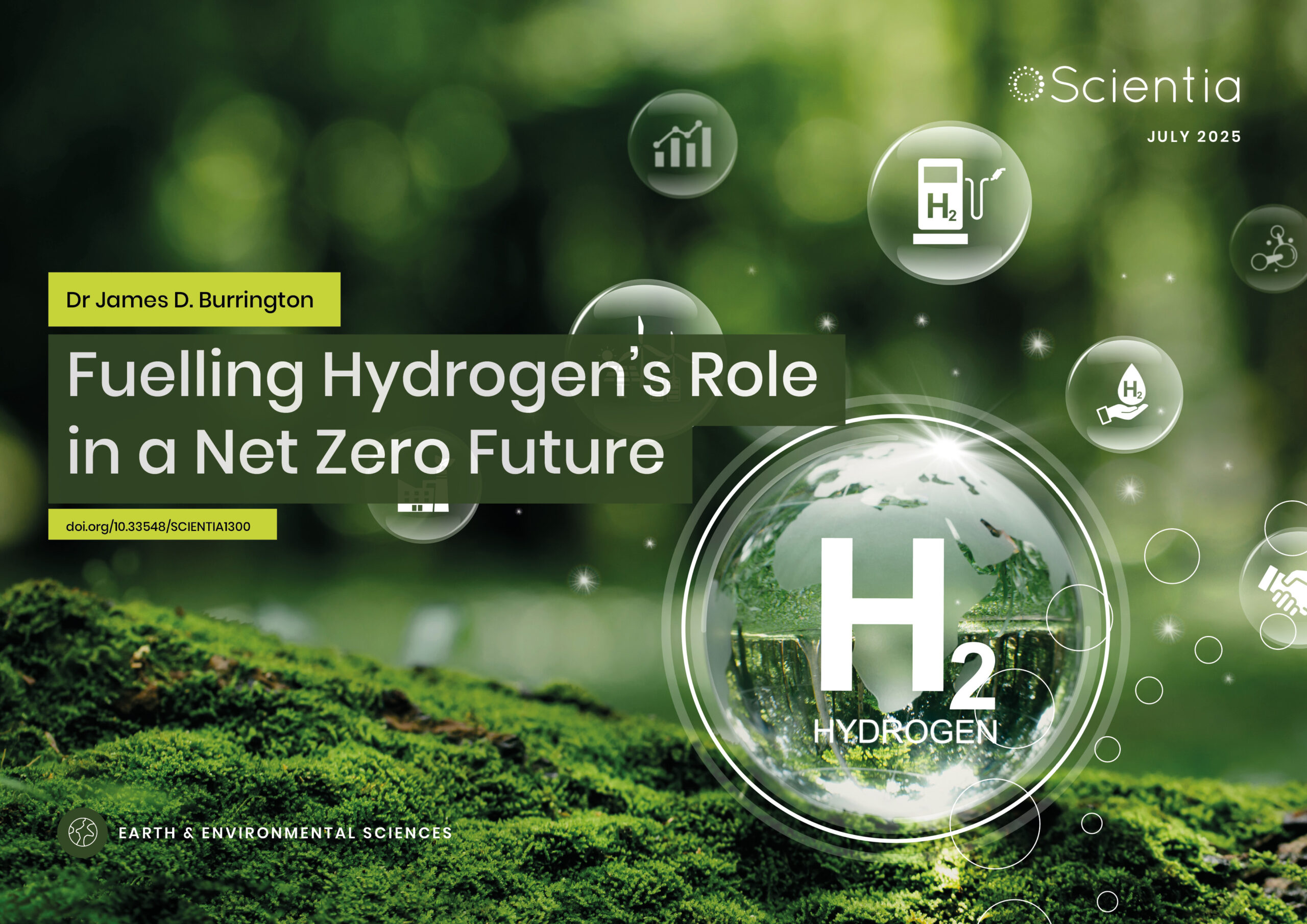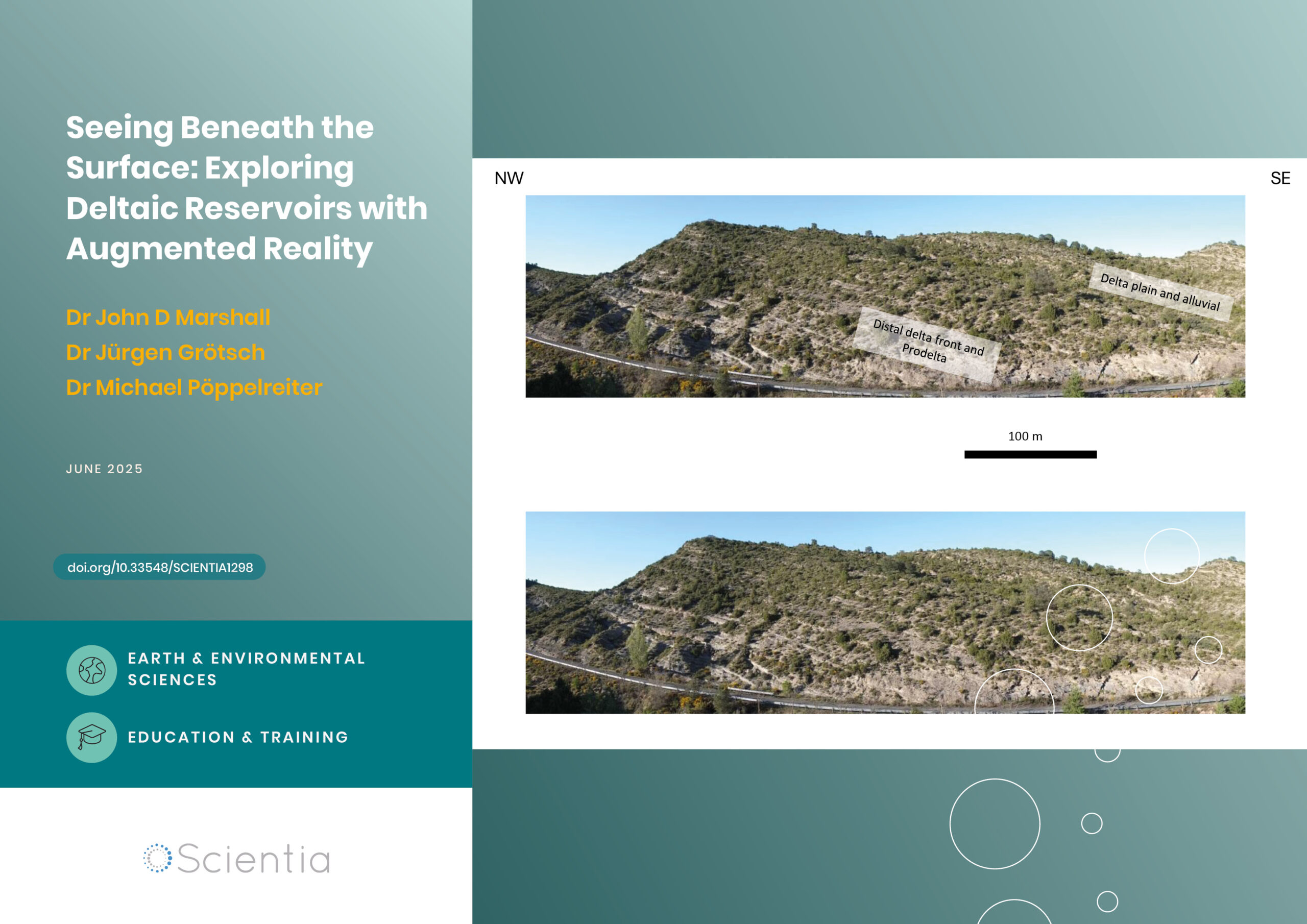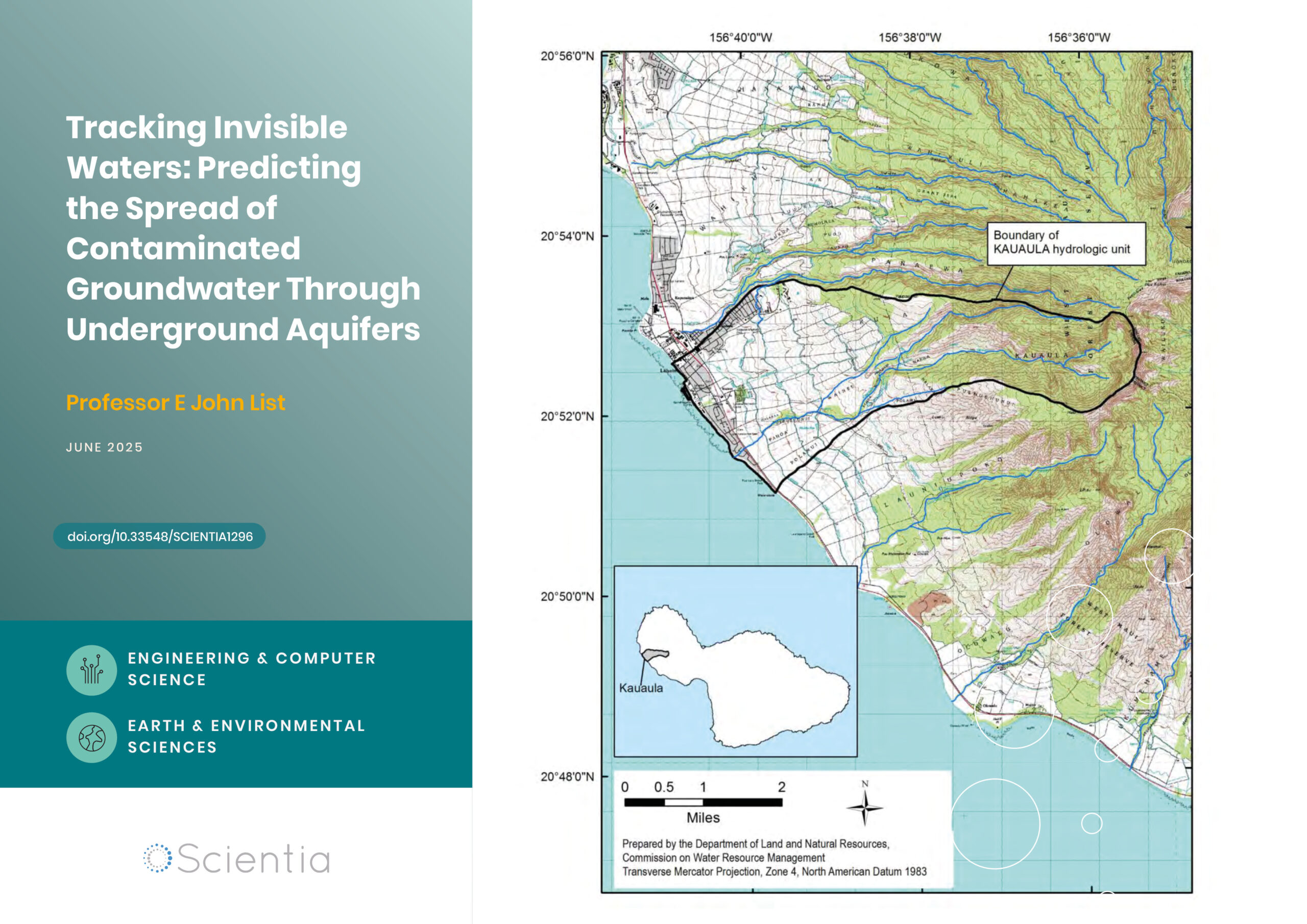Dr Jennifer Brandon – Dr Christopher Verlinden | A New Approach for Detecting Oceanic Microplastics in Real Time
Microplastics are tiny pollutants threatening our oceans and marine life. Current approaches to detect them are time-consuming and expensive. Oceanographers Dr Jennifer Brandon and Dr Christopher Verlinden from Applied Ocean Sciences (AOS) in the USA have developed a game-changing sensor that can swiftly detect and analyse microplastics, cutting through the existing time and cost barriers.
Microplastics: Small but Hazardous
Microplastics are hazardous small particles, measuring less than 5 millimetres in size, either manufactured or resulting from the breakdown of larger plastic debris. They can be found discarded in a wide range of environments, such as oceans, rivers, lakes, soil, and even in the air, where they persist for long periods. These particles raise significant concerns as they accumulate toxins and are ingested by aquatic organisms, potentially entering the food chain, posing risks to ecosystems and human health. Moreover, they can have negative economic impacts on the fishery, shipping, and tourism industries.
Over 90% of oceanic plastic pollution consists of microplastics. While various sensing approaches for microplastic detection in oceans exist today, they still face numerous limitations, including long sensing times, high false detection rates, and expensive equipment, which hinder their effectiveness in detecting these plastic pollutants. There is an urgent need for direct, rapid, accurate, and affordable sensing techniques for microplastics if we are to improve environmental conditions.
An Ultra Plastic Sensor to Address Detection Challenges
Scientists at Applied Ocean Sciences (AOS) in Springfield, USA, led by Dr Jennifer Brandon and Dr Christopher Verlinden, propose a novel sensor device that could work wonders in solving the pressing issue of microplastic detection in water samples.
Current methods of collecting microplastics involve taking water samples and transporting them to laboratories for analysis. However, this process is laborious and time-consuming, leading to backlogs in many microplastics research facilities due to workforce shortages. Moreover, analysing these samples requires manual techniques such as density separation or filtration, followed by spectral analysis using advanced methods like Raman spectroscopy or fluorescence microscopy.
Unfortunately, these methods are not only tedious but also limited in their applicability, often working effectively only in specific oceanic regions, typically near research institutions or heavily contaminated subtropical areas. As a result, vast ocean areas remain unexplored and unrecorded for microplastic content, which hinders effective remediation strategies.
In response to these challenges, AOS has proposed a cutting-edge sensor capable of detecting microplastics in real-time, directly in water samples (in situ). This innovative device promises to revolutionise microplastics research by significantly reducing sampling time and enabling exploration of previously understudied ocean areas and water columns. Its portability and ability to be carried on exploratory ships will make it a sought-after technology for microplastics researchers and climate organisations.

What makes the Ultra Plastic Sensor So Impressive?
The new proposed sensor is powered by ultrasonic frequencies, flow through capability, and machine learning expertise, streamlining sample processing. It utilises ultrasound technology, which has proven efficient in detecting microparticles in medical and field research requiring non-destructive inspection. When a sound wave matches a bubble size, it changes its compression. Similarly, microplastics in seawater are expected to respond to sound waves based on their size and composition. This technology has not been previously utilised in microplastic detection, making the proposed device revolutionary.
AOS researchers now plan to analyse different types of ultrasonic data to identify patterns related to plastic concentrations. By collaborating with university researchers and monitoring programs, they are working to develop a prototype best suited to accurately measuring plastic levels in water using sound waves.
While an in situ ocean plastic sensor is not yet commercially available, other research groups are also developing devices to address current challenges. For example, researchers at Northeastern University have developed a sensor based on optical systems that collects data for analysis, measures water temperature and salinity, and can transmit it to researchers using satellites. However, it can only collect limited samples, thus limiting its in situ use. On the other hand, the AOS Ultra Plastic sensor uses an acoustic flow-through system that can be useful in monitoring large volumes of water.
Exciting Prospects and Partnerships
AOS has received National Science Foundation funding to develop this sensor and is in the process of patenting the technology. Once commercially available, they intend to sell it to government labs and monitoring groups, such as CalCOFI and the Okeanos Explorer. For most research labs, this device will be a one-time, durable purchase that includes additional replacement parts and software updates. The broad implications of this new Ultra Plastic sensor will be to accelerate the detection of microplastic pollution and help inform remediation and policy decisions regarding targeted clean-ups, fisheries monitoring, and other ecological needs.
SHARE
DOWNLOAD E-BOOK
REFERENCE
https://doi.org/10.33548/SCIENTIA1095
MEET THE RESEARCHERS

Dr Jennifer Brandon
Applied Ocean Sciences
Springfield, VA
USA
Dr Jennifer Brandon is a climate scientist and an expert in marine microplastics. She holds a PhD in Biological Oceanography from Scripps Institute of Oceanography, University of California San Diego. Her research focuses on the temporal and spatial analysis of marine microplastics, developing techniques to identify and quantify them in various environments. Notably, her ground-breaking study on the exponential increase of microplastics in marine sediment garnered global press attention and recognition. Dr Brandon’s expertise has led to numerous interviews with prominent media outlets such as NPR, The New Yorker, and the BBC. She has also served as a Price Postdoctoral Fellow in Science Communication at Birch Aquarium and has delivered hundreds of lectures, including as a National Academy of Sciences speaker. Additionally, Dr Brandon has provided valuable insights on marine debris and waste management to various companies and governments worldwide.
CONTACT
E: jennibrandon24@gmail.com
W: www.JenniferABrandon.com and https://www.appliedoceansciences.com/
X: @PlasticsJenni

Dr Christopher Verlinden
Applied Ocean Sciences
Springfield, VA
USA
Dr Christopher Verlinden is an expert in ocean acoustics, propagation physics, digital signal processing, and machine learning. He earned his PhD in Applied Ocean Sciences from the Scripps Institute of Oceanography, University of California San Diego. With a background in marine chemistry and materials science, he collaborated on developing empirical fault detection methods for composite materials. His research spans passive ocean acoustics and ocean noise analysis, with significant contributions to measuring ocean pH using acoustic propagation. With 14 years of experience in the US Coast Guard, including teaching marine pollution and environmental science, he co-founded Applied Ocean Sciences in 2019, where he serves as Senior Scientist and Chief Technology Officer. Dr Verlinden holds numerous patents for oceanographic instrumentation and maintains a TS/SCI level security clearance.
CONTACT
E: chris.verlinden@appliedoceansciences.com
W: https://www.appliedoceansciences.com/
X: @AppliedOceanSci
KEY COLLABORATORS
Dr Eeshan Bhatt, Applied Ocean Sciences
Dr Dimitri Deheyn, Scripps Institution of Oceanography
Dr Ted Argo, Applied Research Associates, Inc.
FUNDING
This project is funded through Phase I and Phase II funding from the NSF SBIR America’s Seed Fund programme.

REPUBLISH OUR ARTICLES
We encourage all formats of sharing and republishing of our articles. Whether you want to host on your website, publication or blog, we welcome this. Find out more
Creative Commons Licence (CC BY 4.0)
This work is licensed under a Creative Commons Attribution 4.0 International License. 
What does this mean?
Share: You can copy and redistribute the material in any medium or format
Adapt: You can change, and build upon the material for any purpose, even commercially.
Credit: You must give appropriate credit, provide a link to the license, and indicate if changes were made.
SUBSCRIBE NOW
Follow Us
MORE ARTICLES YOU MAY LIKE
Dr James D. Burrington | Fuelling Hydrogen’s Role in a Net Zero Future
Hydrogen is often touted as the fuel of the future, but how much can it really contribute to global decarbonisation? Dr James D. Burrington, founder of NiceChemistry.com, has modelled how hydrogen technologies, particularly green hydrogen, might support worldwide net zero goals. His research applies rigorous metrics to assess energy efficiency, cost, emissions, and land use. This revealed that, while hydrogen may not directly replace electricity, it could be critical in decarbonising sectors where electrification falls short.
Dr Shigetaka Hayano | The Rubber Revolution: Cracking the Code for Tire Recycling!
Traditionally, rubber waste was nearly impossible to recycle due to crosslinked sulphur bonds. But a team of researchers led by Dr Shigetaka Hayano from Zeon Corporation, in Japan, have achieved a groundbreaking feat in rubber recycling. Using mild conditions for the reaction, scientists have overcome the unfavourable cross-linked structure and have achieved recovery of rubber’s original monomers. This process restores cyclopentene monomers with 90% efficiency, allowing old tires and industrial rubber waste to be chemically recycled into high quality materials. If scaled up, this innovation could revolutionise waste management, reduce environmental pollution, and enable a circular economy for rubber production.
Seeing Beneath the Surface: Exploring Deltaic Reservoirs with Augmented Reality
In the Aínsa Basin of the Spanish Pyrenees, the Mondot-1 well was drilled, cored, and fully logged to capture a detailed record of a long-buried ancient river delta system. Dr. John D. Marshall, Dr. Jürgen Grötsch, and Dr. Michael C. Pöppelreiter with co-workers at Shell International used this core to trace how sediments once flowed across the landscape, and were deposited under shifting tectonic conditions. The team employed augmented reality and interactive virtual displays; these innovative tools offer new ways to explore subsurface depositional systems, and are particularly useful in locations where physical access to the core is difficult, or no longer possible.
Professor E John List | Tracking Invisible Waters: Predicting the Spread of Contaminated Groundwater Through Underground Aquifers
When we think about water pollution, we often picture oil spills on the ocean surface or chemicals flowing down rivers. But some of the most significant environmental challenges occur completely out of sight, deep underground, where contaminated water moves through layers of rock and soil. Understanding how these invisible pollutants travel has profound implications for protecting our drinking water supplies and coastal ecosystems. Groundwater engineer Dr E. John List has developed an approach that challenges fundamental assumptions about how contamination spreads underground.





